The ornamental frame of this tortoiseshell comb is made from gilt open-work silver showing flowers on each side. Three swiveling corals grace the centre of each flower. Continue Reading
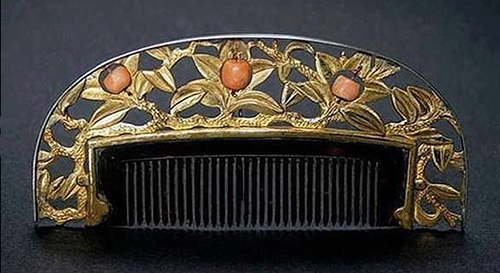

The ornamental frame of this tortoiseshell comb is made from gilt open-work silver showing flowers on each side. Three swiveling corals grace the centre of each flower. Continue Reading
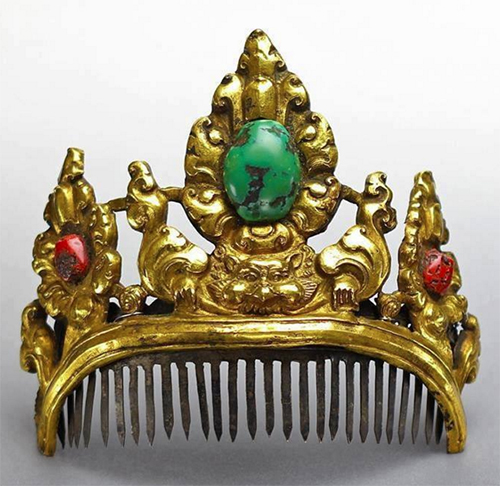
The crown which is the main component of the piece, at the top, was probably originally used to decorate the head of an image. Michael Backman’s example in the bottom photo is captioned “Gilt Copper & Rock Crystal Ganapati (Tsog Dak or Ganesh), Nepal/Tibet, 19th century.” Our crown apparently came to be separated from the… Continue Reading
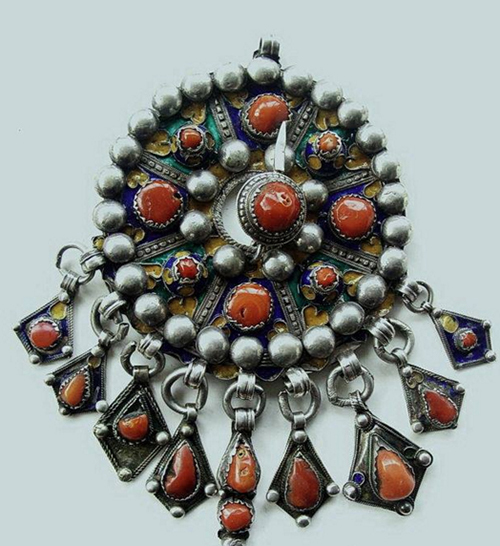
The tabzimt is well known as a traditional fibula from the Kabyle Berbers, who live in the coastal mountain regions of northern Algeria. Picture 2 shows the back of this piece. Continue Reading
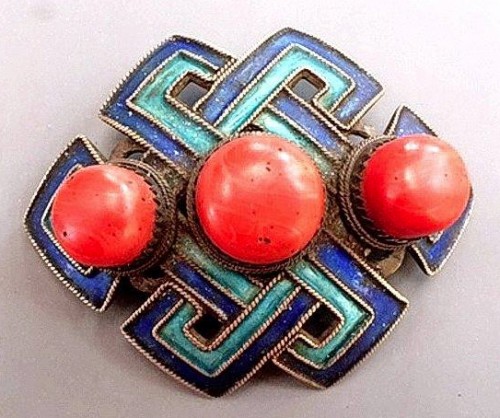
Mongolian hair ornament, enameled silver with paste coral; probably Charhar group; late 19th c. or – perhaps more likely – early 20th c; width 9.5 cm. Acquired in 2015, with great gratitude, from Linda Pastorino, who had held it in her private collection. It’s even more sensational in reality than we had imagined, having admired… Continue Reading
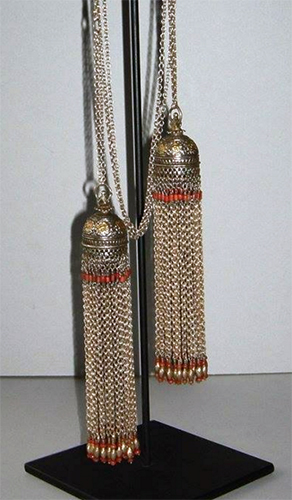
These long silver and coral tassels were traditionally most often used in Uzbekistan as belt ends. They could be attached to quite elaborate and complicated belts or form a belt with a very simple structure, as in this case, where the belt is in effect a chain. Continue Reading
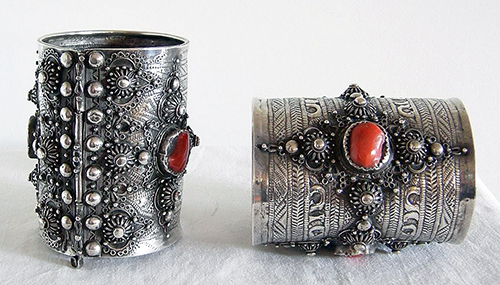
These anklets are exceptional in not showing enamelling, which is typical of later pieces. Continue Reading
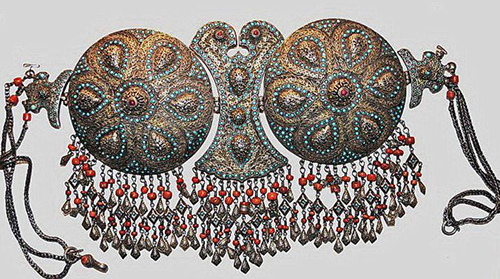
This Uzbeki variant of the Turkoman siradjna was worn by women over a big, upright hat-like headdress, in such a way that the central piece was placed at some considerable distance above the nose. Continue Reading
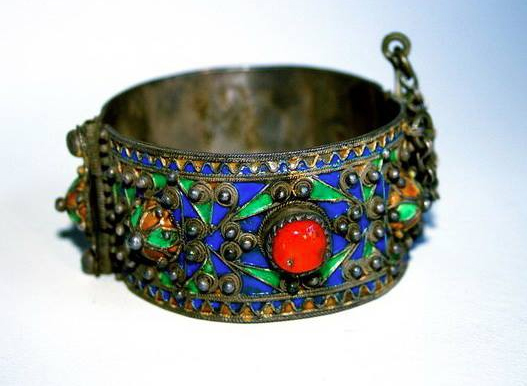
The art of enameling was retained by Islamic and Jewish craftsmen in North Africa when they were expelled from Spain in 1492. In both Algeria and Morocco this art continued to reach great heights. Continue Reading
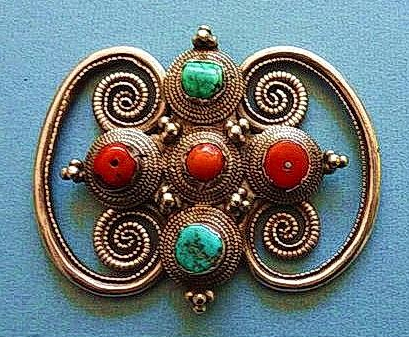
An almost identical example appears on p. 30 of Tibet: a Lost World (1978) , by Valrae Reynolds, which deals with the Newark Collection. Reynolds describes this as a man’s hair ornament, “tied to a silk or cotton scarf. This ornament was worn at a sharp angle over one eye”. See also a photo in… Continue Reading

These bird-shaped earrings come from Khiva, Uzbekistan. The main part is made of very fine gilt silver with first-class filigree work, inlaid with micro-mosaic turquoises, a coral forming the eye of the bird, and a piece of “mutton-fat” jade in the body and coral tassels. Continue Reading